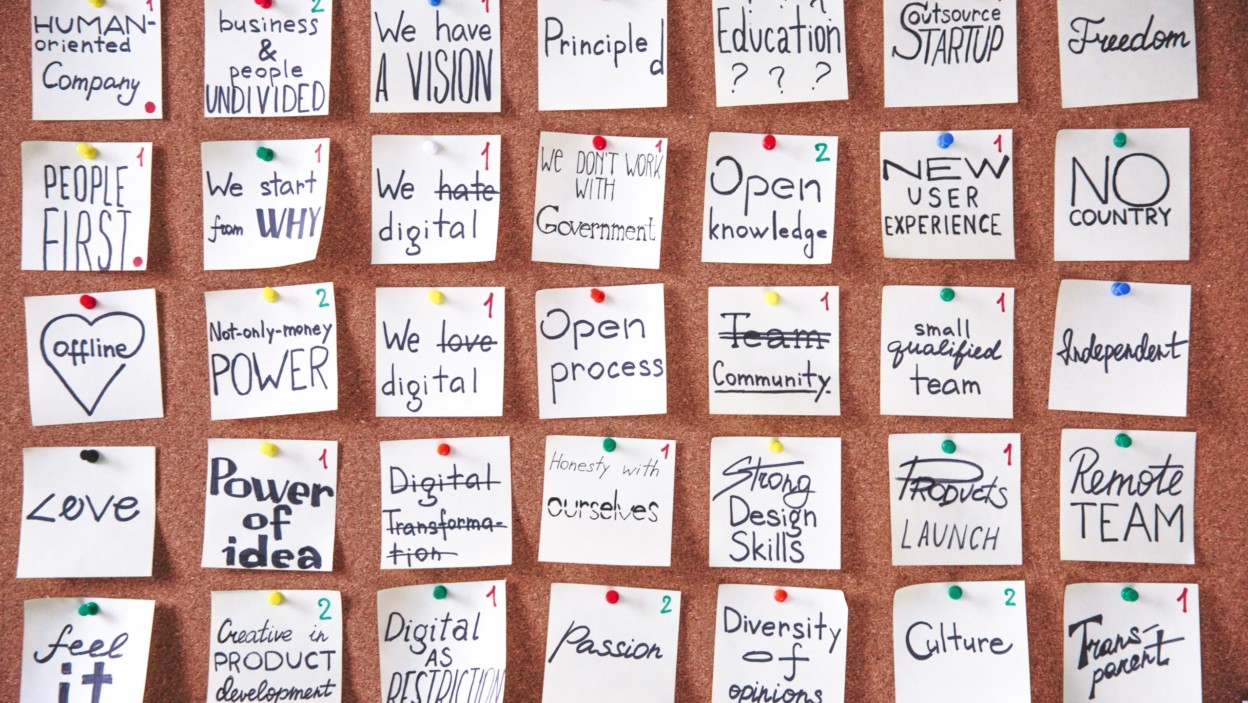As you start planning the year ahead, you may have realized it’s time to refresh your purpose, vision, and mission statements. Executive teams often spend months debating these statements, hashing out exactly the right words that best capture their intentions. But when it’s time to share them with the organization at large, all too often, they’re slapped on some posters, presented at an all-hands, and then never mentioned again (or at least, not until the next refresh).
In other words: employees miss out on the rich, detailed conversations that ultimately shape purpose, vision, and mission statements. They don’t have insight into the trade-offs that were weighed; the evolution of the debates over time; the balance struck between passion for an outcome and what’s realistically possible. And they certainly haven’t had a chance to weigh in on what the statements actually say.
As a result, purpose, vision, and mission statements often feel like a conceptual exercise for leadership, completely unconnected from teams’ day-to-day work. Not to mention, they’re often so broad and dreamy, employees can’t distinguish between them: could a junior member of your team easily repeat back your mission statement, let alone explain how it’s different from the vision? For that matter, could you?
We’ve designed our Adaptive Planning process to address exactly these issues. Purpose (which we refer to as “Creed”) is the foundation of the organization, guiding the vision, mission, and strategy, all the way down to quarterly plans. This approach means that teams are constantly referring back to purpose, mission, and vision statements, and using them to guide their decisions on a daily basis.
But it all starts with conversations. Instead of prescribing purpose, vision, and mission statements, first engage with stakeholders from across the organization—not just your executive team—and listen to their hopes and fears for the business. (You may even want to include a few external voices: you might be surprised by the end result!) We’ve put together a few questions to serve as thought starters:
- If you could change one thing in the external landscape to improve the potential of the business, what would it be?
- If you could change one thing in the internal workings of the business to improve its potential, what would that be?
- Imagine the opportunity you are most excited about—now make it 10x bigger. What vision would that be pursuing? What would need to be done to ready the business for it?
- Thinking about the next three to five years, what keeps you up at night?
- What works really well about the current statement(s)? What would you fight to keep?
- What doesn’t work? What would you like to edit out immediately?
- What do you most want from this leadership team that you are afraid to ask for? Why is it so important? What would happen if you didn’t get it?
A final note if you’re embarking on this process: while it’s always a challenge to find the right balance of “including more perspectives” and “refining and deciding on a statement,” it’s much easier to ask for input “sooner” rather than “later.” Be clear upfront about how decisions will be made and who will make them, but invite others in early to avoid surprises and delays down the line. Remember, the more people feel they’ve had a hand in shaping change, the less likely they are to reject it.








The Evolutionary Edge
Every Link Ever from Our Newsletter
Why Self-Organizing is So Hard
Welcome to the Era of the Empowered Employee
The Power of “What If?” and “Why Not?”
An Adaptive Approach to the Strategic Planning Process
Why Culture/Market Fit Is More Important than Product/Market Fit
Group Decision Making Model: How to Make Better Decisions as a Team